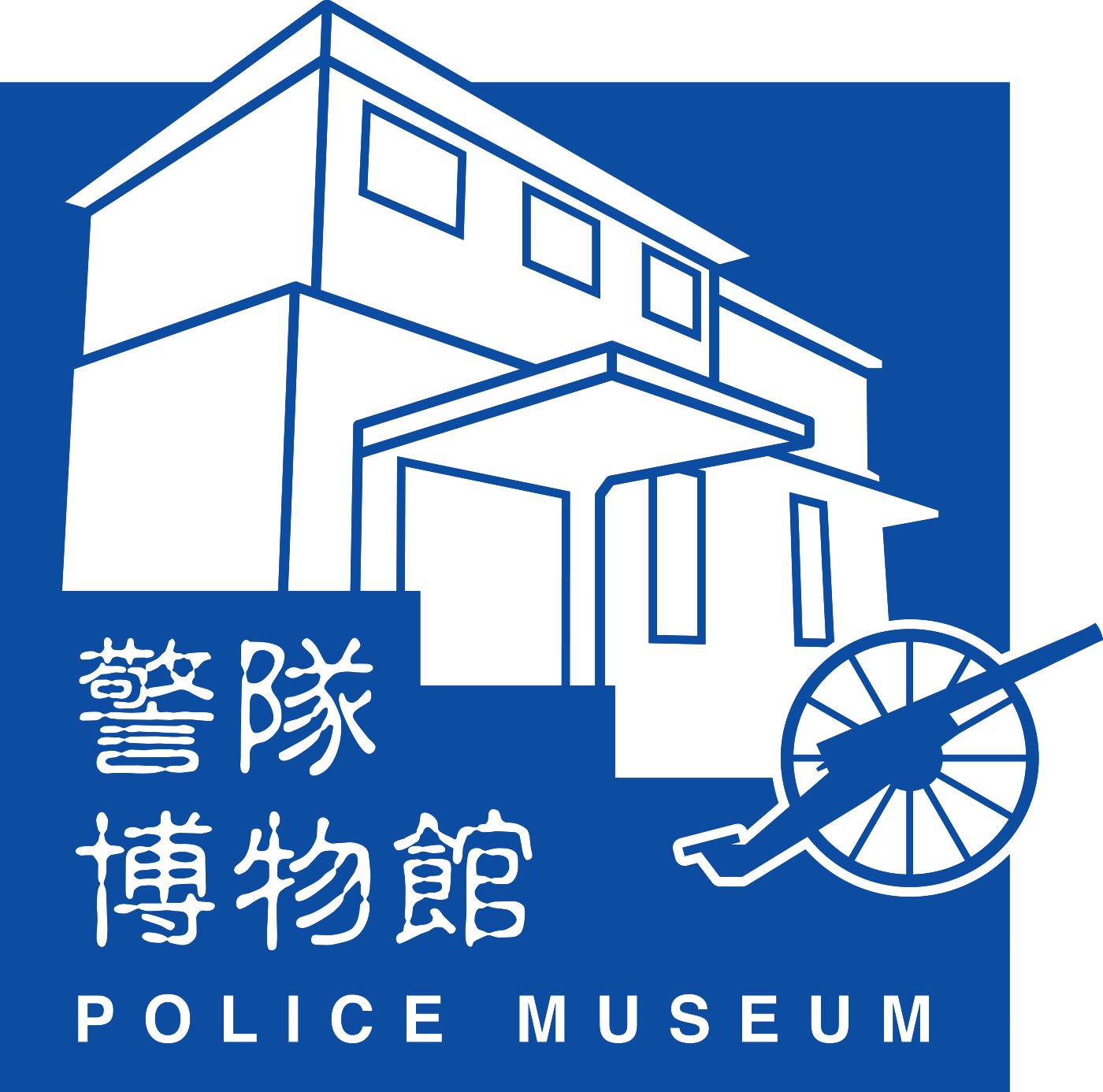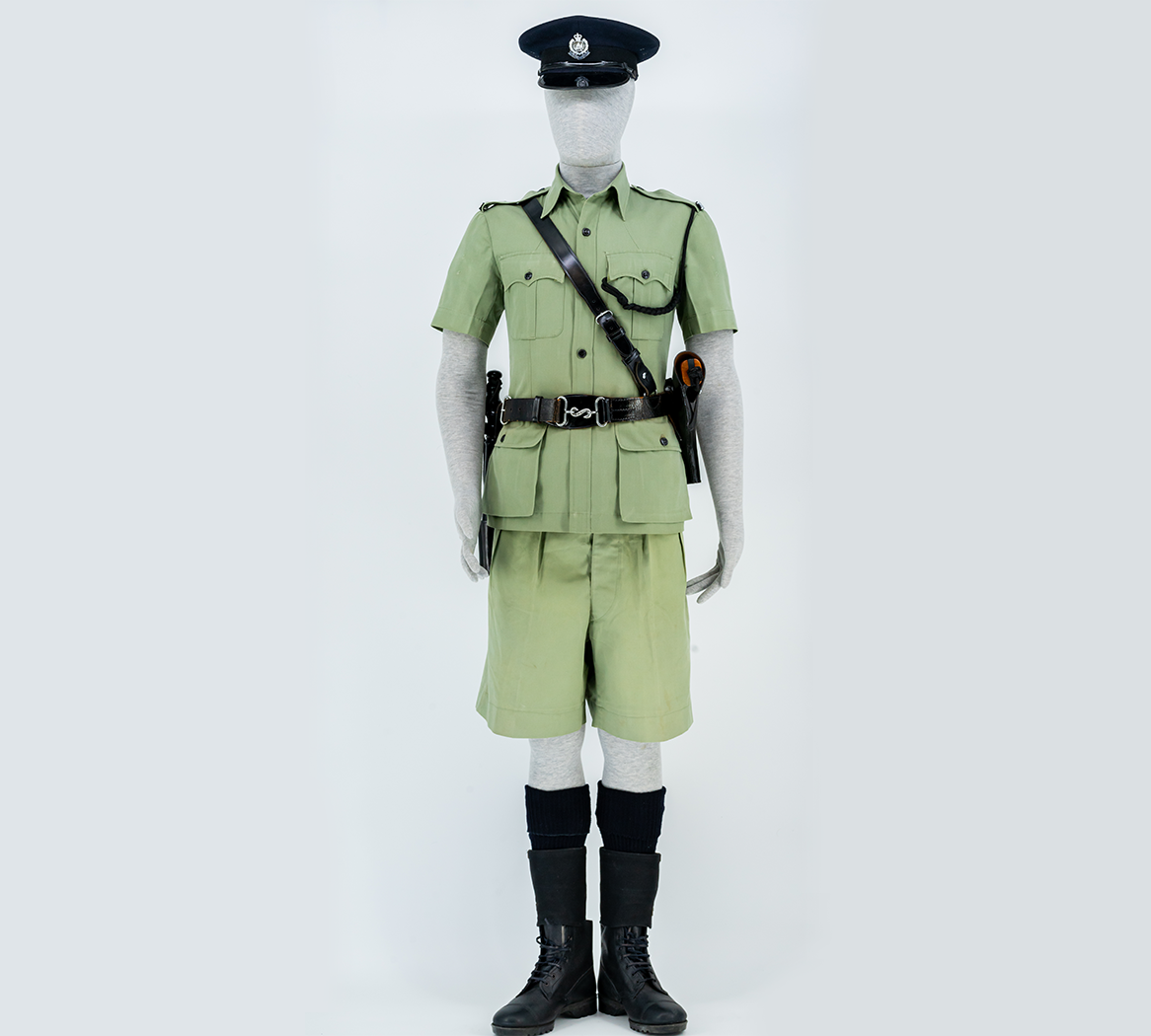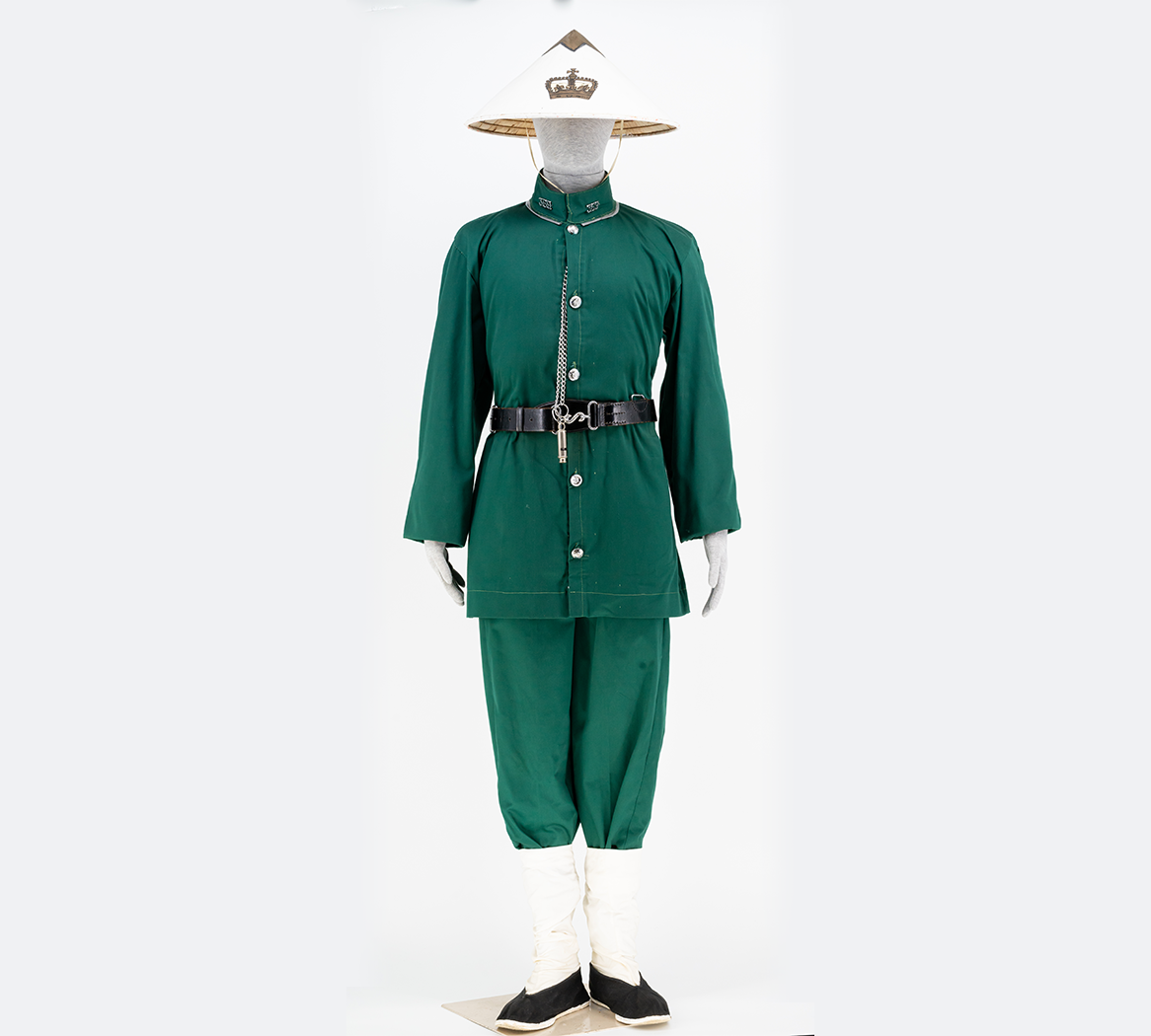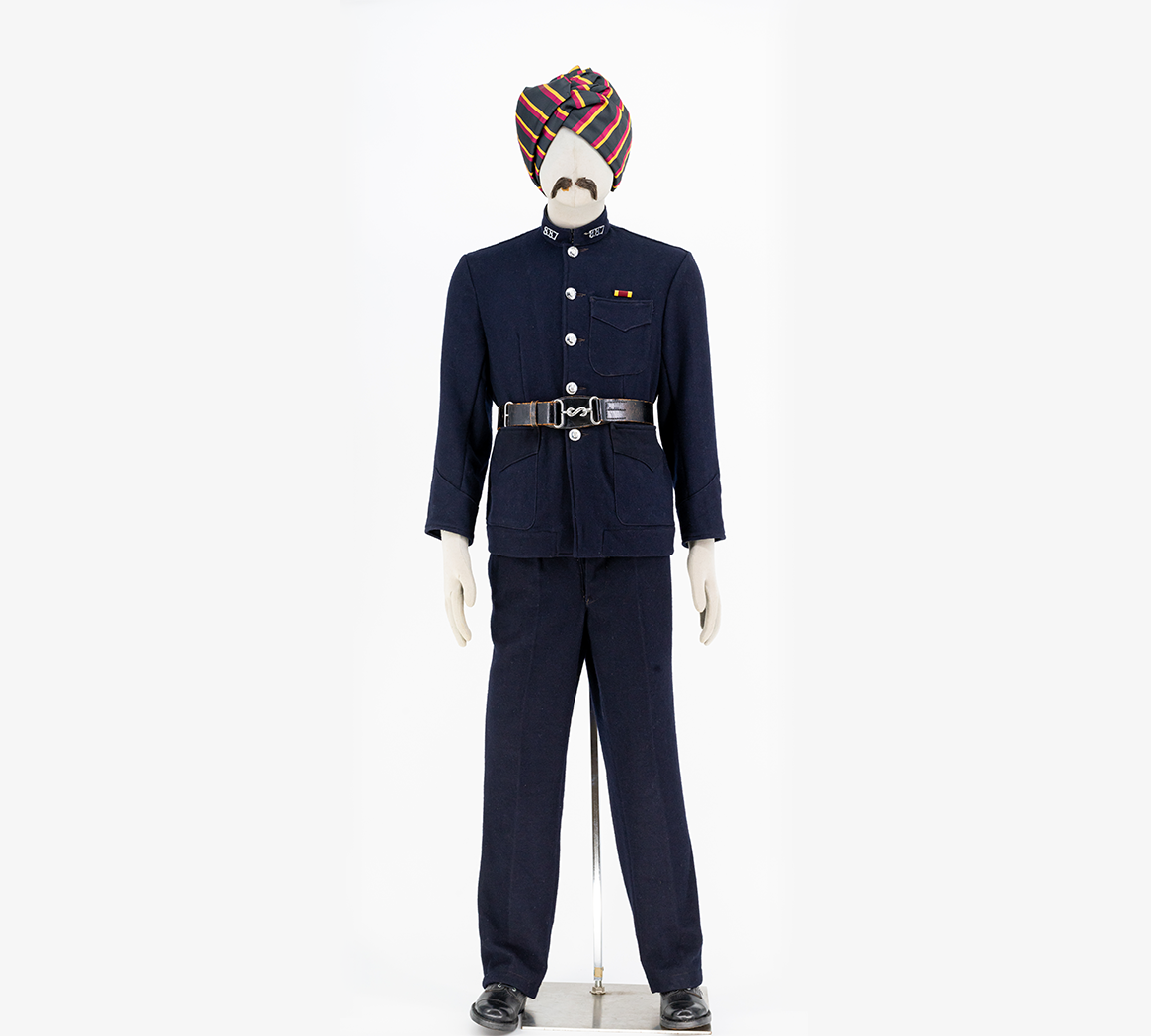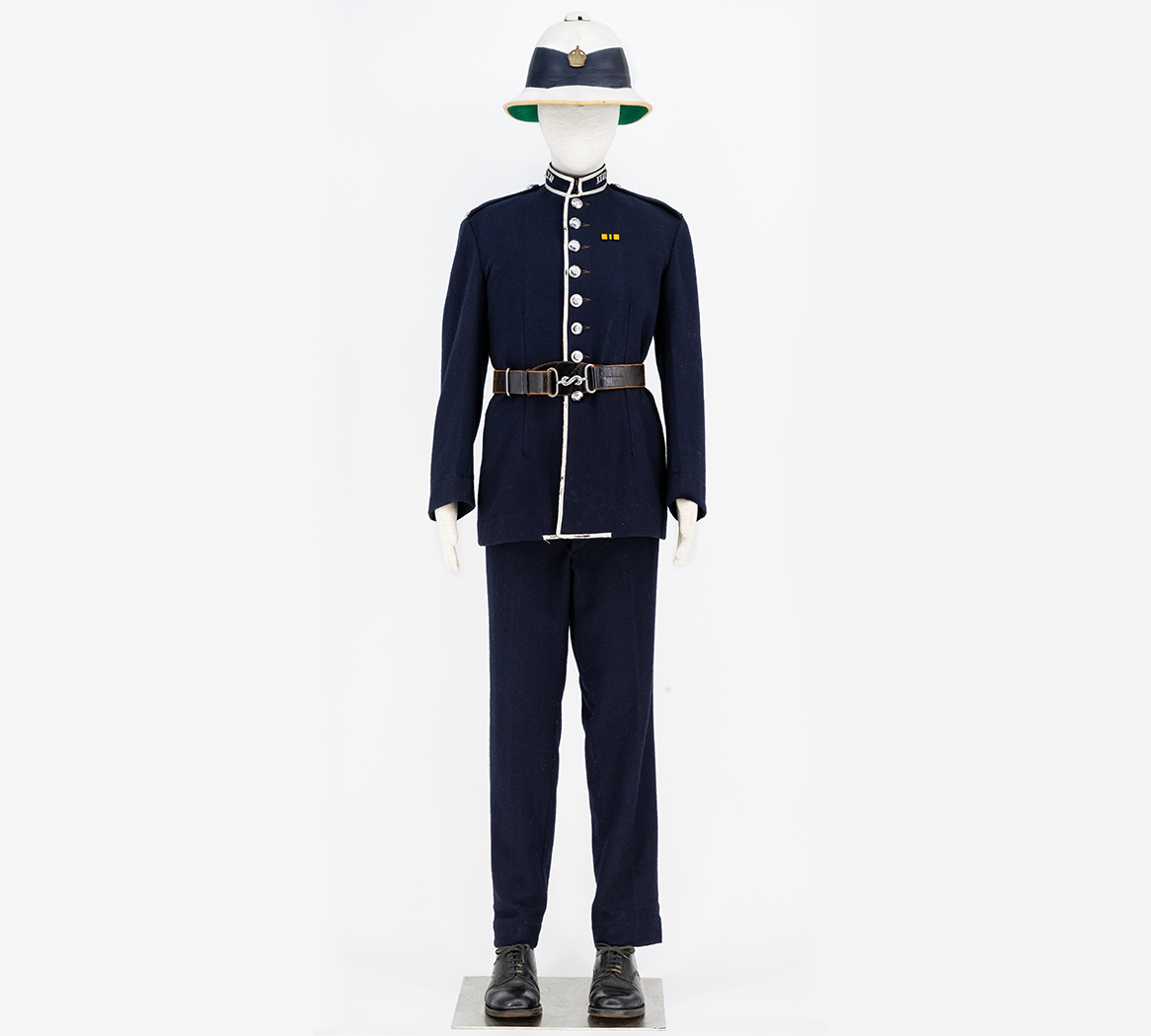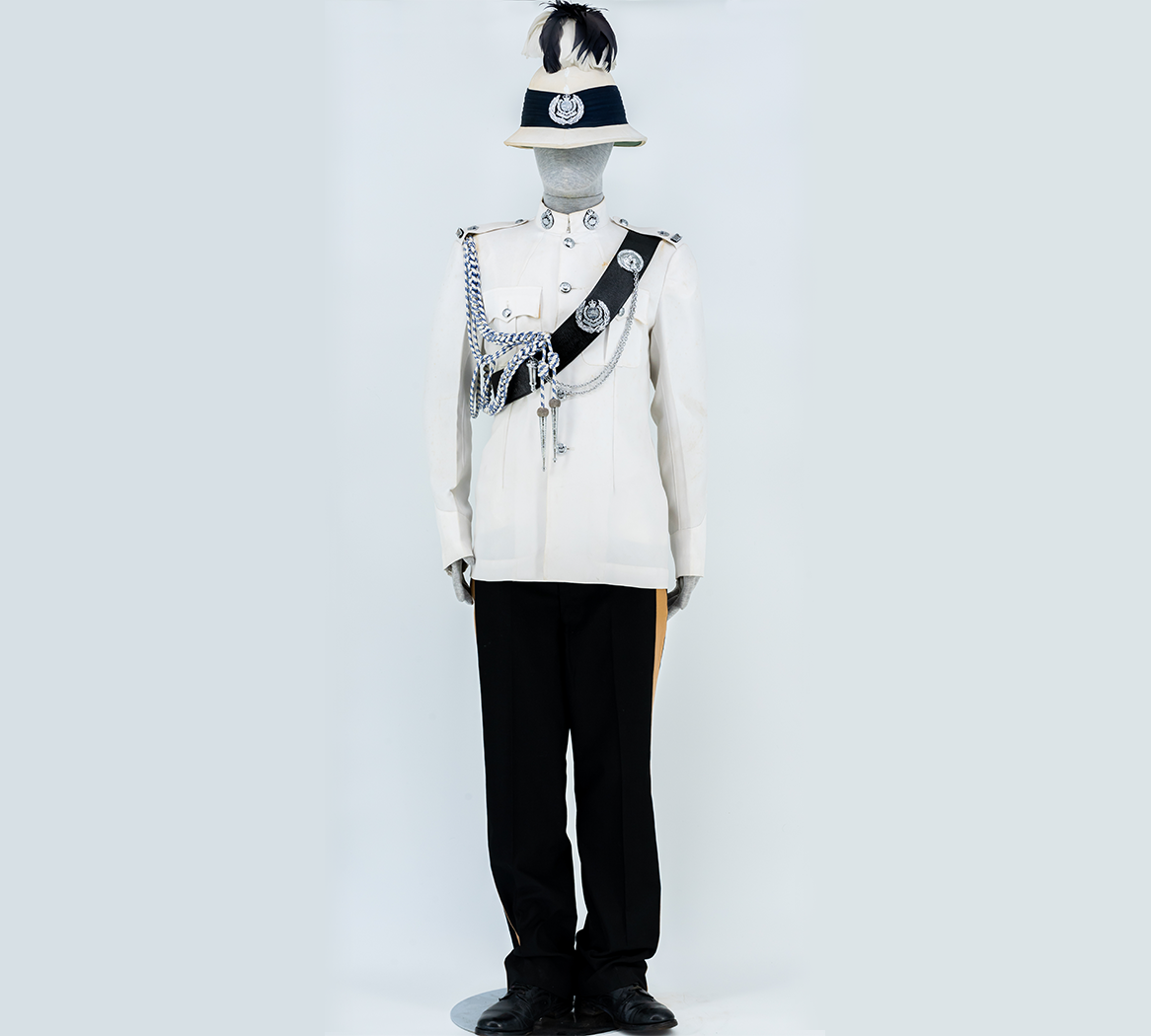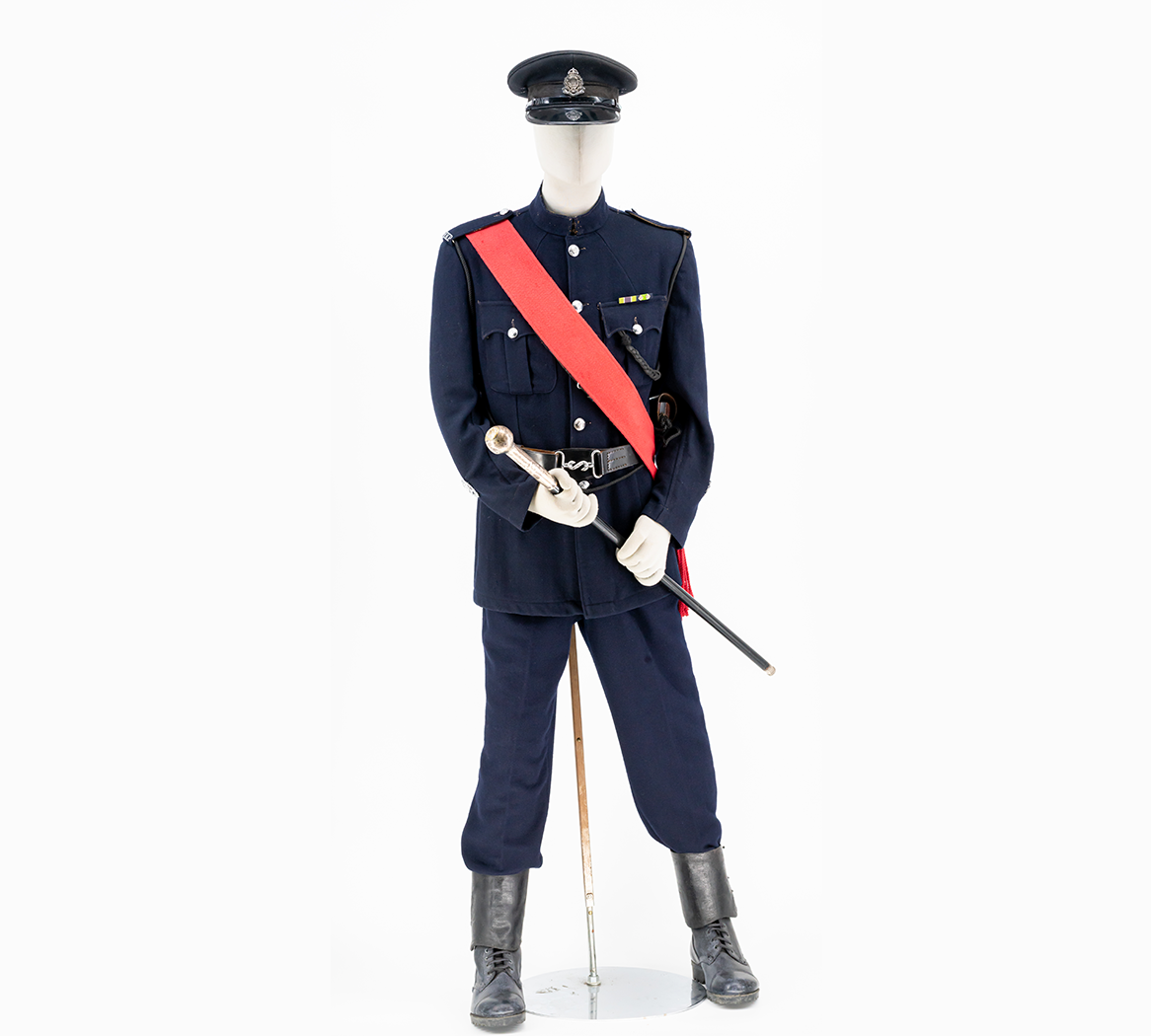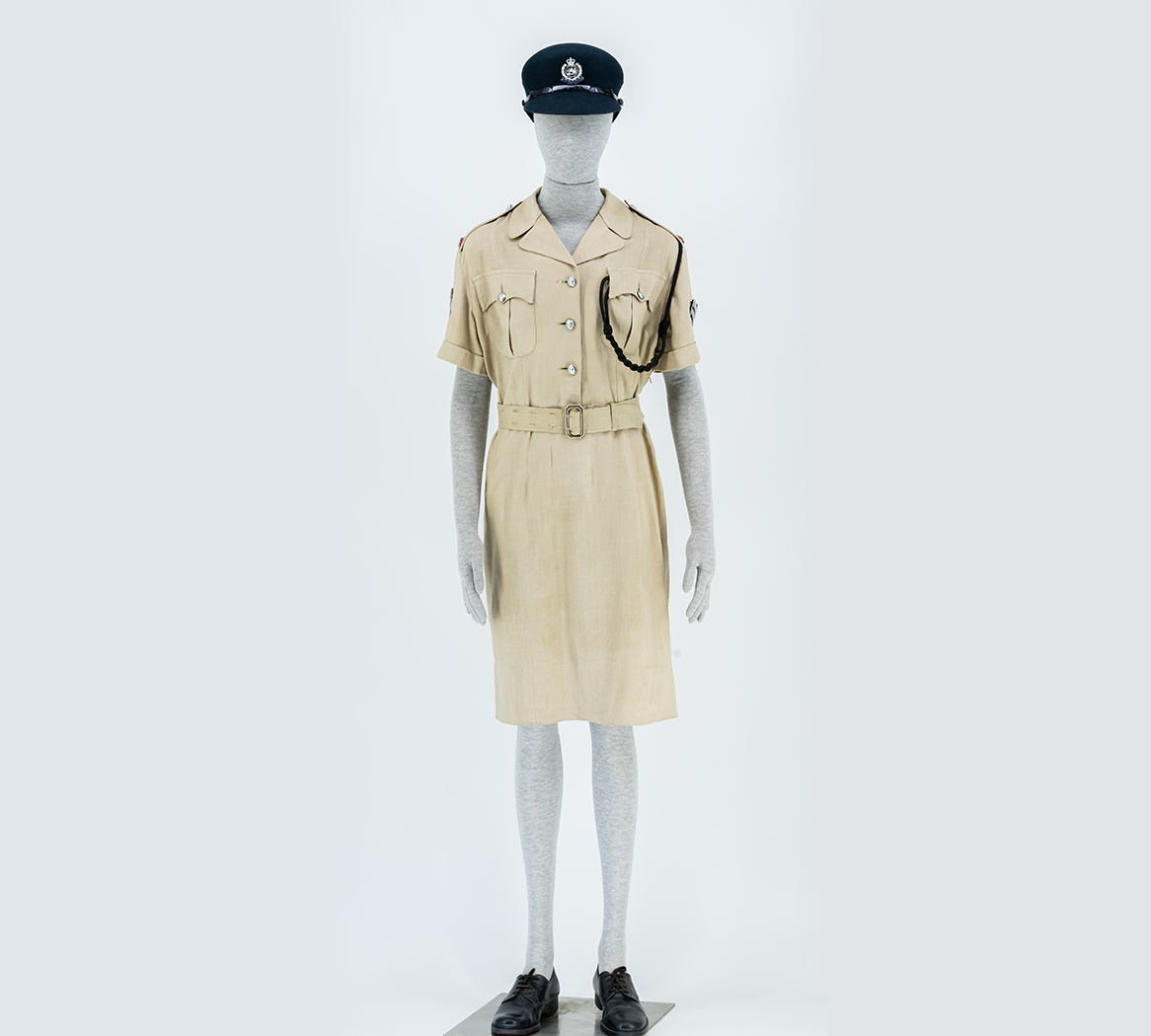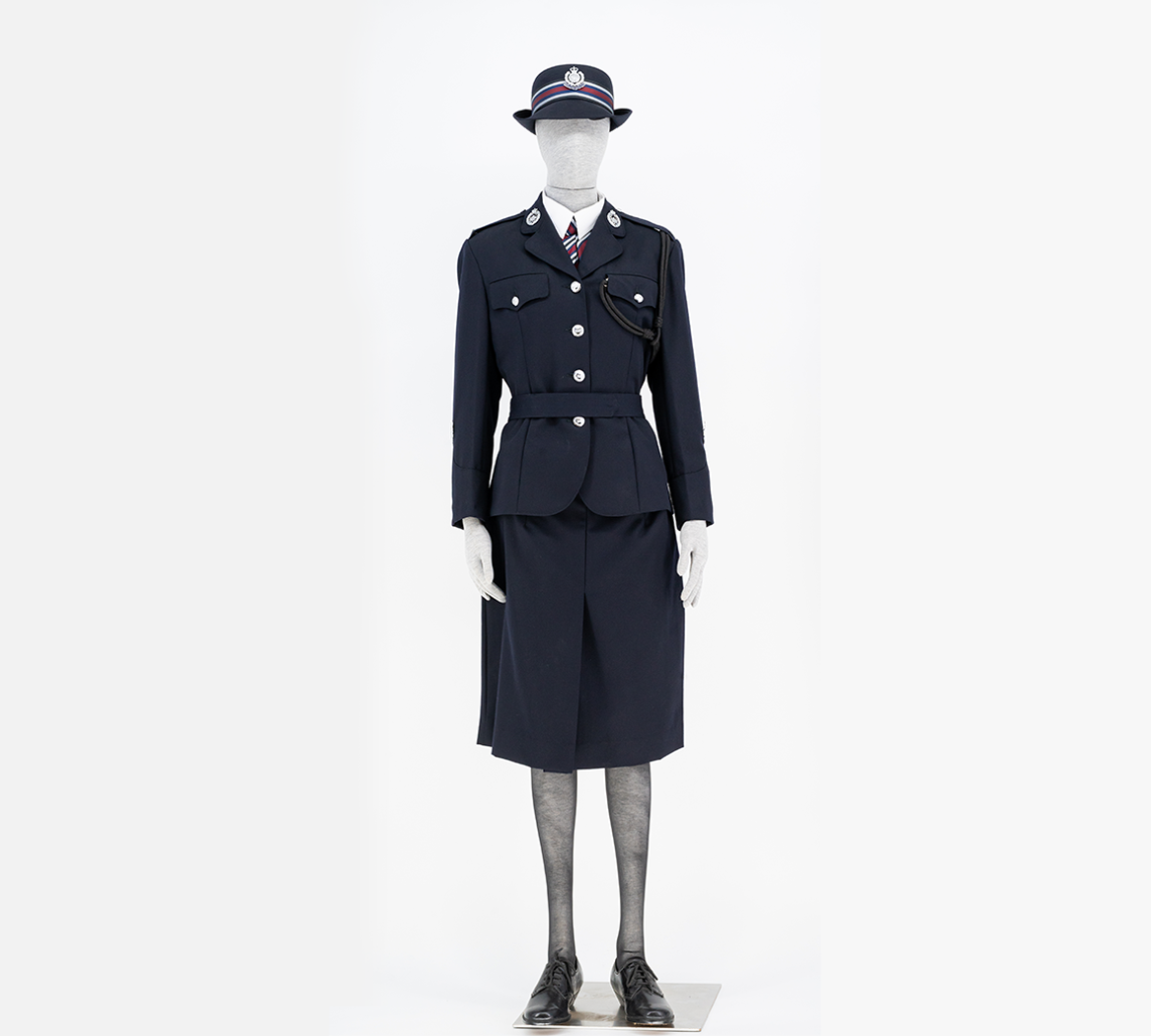Description
The uniform for male police officers underwent a major overhaul in 1973. This summer uniform for male police officers entered service in 1973. Apart from the change from shorts to trousers in 1977, the uniform was worn until 2004 when it was replaced by a new uniform with a light blue shirt (for Constables and Sergeants) and a white shirt (for Station Sergeants and Inspectors and above) and dark blue trousers.
At that time, the Force was a paramilitary organisation with an emphasis on the use of force, and Hong Kong was under British rule. Therefore, the uniform was similar in design to the British military uniform. It consisted of an olive-green short-sleeved tunic, olive-green shorts, a black leather Sam Browne belt with a brace, long socks, black webbing anklets, short black leather boots and a peaked cap. The uniform was made of twill fabric and had four pockets on the tunic for officers to carry their belongings.
Police officers at the Officer ranks wore long yellow socks. Hence, they were commonly known as “yellowfin sea bream”. Meanwhile, the rank-and-file officers wore long black socks, so they were commonly known as the “black feet”. Between the 1950s and 1970s, Constables, Corporals, Sergeants, and Staff Sergeants had to wear anklets, which were a piece of canvas with two buckles to tie around the tops of their boots, whether they wore trousers or shorts in uniform. When wearing trousers, the bottoms of their trousers were bloused above the anklets. However, police officers at the Officer ranks, when wearing shorts, wore only long yellow socks with dark blue cuffs. When wearing trousers, they did not have to blouse the bottoms of their trousers.
In the past, police officers wore a black whistle lanyard on duty, with the police whistle stowed in the left breast pocket. The only weapons carried by patrol officers were a baton and a revolver. The baton was usually worn on the right rear of the belt. Prior to 1993, the revolver holster was a horizontal pouch, fixed to the left-hand side. The design was distinctly different from the straight draw holster now used by uniformed patrol officers. The horizontal holster was not designed to prevent the snatching of the revolver and was not sufficiently secure to prevent the revolver from falling out of the holster when the officer was running. To prevent the loss or snatching of the revolver, a safety lanyard used to be fastened to the end of the grip whilst the other end of the lanyard was attached to the leather belt. The Sam Browne belt brace was used to distribute the weight of the belt, to hold it in place and to hold the mouthpiece for the patrol radio. The brace was known as the “antenna” and the horizontal leather belt as the “ground line”. Together they were known as the “sky ground line”.

